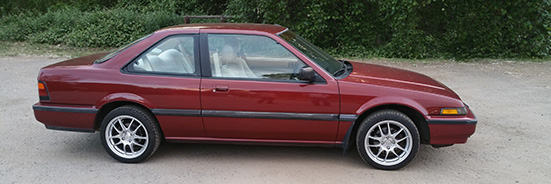I am the second owner of an 88 LX-i and it was retrofitted to R134a by the first owner. It also has a Keihin compressor. It was recharged last April and was not as cool as I thought it should be. I also replaced the compressor at that time with a used Keihin because the original Keihin's front seal was bad. I also replaced the o-rings on the hoses going to the compressor just to be safe. While doing this, I had the system open for about 2 hours. About a month ago, we started using the A/C again, and it was noticeably weak. Recently, it has started blowing the #5 fuse in the underdash fusebox everytime I turn the A/C on. If I disconnect the compressor clutch connector from the compressor lead, the fuse no longer blows. Given this information, I have a few questions
1. Do I HAVE to replace the receiver-dryer (about $60 for an OEM)
2. Is my compressor clutch faulty, or is the dryer shot from being exposed to the atmosphere for 2 hours.
3. Why does the fuse keep blowing?
4. It there a cheap way to retrofit to a Denso compressor (under $100) and would I get better results from it.
5. Do you think that there is a leak in the system somewhere? If so, where?
Any advice/help is greatly appreciated
Sorry if my post is a little long, I just prefer to give all of the details to get better solutions



 Reply With Quote
Reply With Quote







Bookmarks